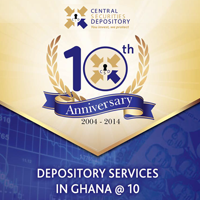The Finance Minister, Seth Emmanuel Terkper has stated emphatically that the decision to raise capital through the issuance of international bonds, otherwise known as Eurobond, has become a mainstay in Ghana’s borrowing mix as it provides a cheap source of funds to support the country’s recurrent and capital expenditure.
The remarks, which point to government’s plans to turn to the international capital market every year, follows the recent successful issuance of the country’s fifth Eurobond of US$750 million at a 9.25% yield amidst fears that the appetite for Eurobond could lead to record interest payments.
The country is expected to pay some GH¢10.5 billion in interest payments this year alone, a figure which is likely to rise further given other debts taken on by government for financing capital expenditure and other debts.
Mr. Terkper, however, has explained to the B&FT that Eurobonds usefulness to Ghana’s economic strategy cannot be in doubt as it falls in line with the ‘smart-borrowing’ agenda of the government and that the bonds are not any different from other borrowing means.
“What’s the difference between the Eurobonds and the standard borrowing? With the standard borrowing a financial institution(s) is/are involved. If you look at the Eurobonds as one form of borrowing, for as long as you are going to borrow externally or locally to finance development, you don’t leave it out as an option,” the Finance Minister argued.
According to Mr. Terkper, per government’s new debt management strategy, the sinking fund which will allow government to handle bullet payment of debts obligations such as the maturing 2017 Eurobond is modeled after Cocobod’s successful escrow account mechanism which allows it to borrow on the international capital market at a cheaper rate.
“As we improve with the sinking funds, it’s possible to get Eurobonds at a cheaper rates just like Cocobod -- if they didn’t develop the escrow merchanism in place, they could be borrowing at 8-9 percent.
“But Cocobod is on the capital market and we don’t question why they should borrow from the markets because it’s a cheaper source of financing,” Mr.Terkper added.
Ghana as part of the new debt management strategy recently implemented a “buy-back” of US$100 million of the Ghana 2017 bond using the newly established sinking fund. As a result, the balance on that Bond has been reduced to US$400 million, which will be redeemed from the proceeds of the new issue.
Though the recently issued Eurobond in a broader market context is considered a significant transaction because it represents the first sub-Saharan African (excluding South Africa) sovereign issue in 2016, the rate is a lot higher than what it cost COCOBOD to secure its international facility.
COCOBOD on September 21 this year signed a US$1.8 billion loan facility for the purchase of cocoa beans for the 2016/2017 crop year which comes with an all-inclusive rate of 1.468 percent, far cheaper than the interest government got on its Eurobond.
“But can we also enhance the performance of the economy –put merchanism in place like channeling the Eurobonds that we issue to replace our penchant for going for T-bills to finance the capital expenditure in the budget and using them to do capital development and pay over 10 years rather than using them to repay short-term debts,” the Minister added.
Debt burden
This year the total interest payment is estimated at GH¢10.5 billion, equivalent to 6.6 percent of GDP and 24.1 percent of total expenditure. Of this amount, GH¢2.2 billion will be expended on external interest, while GH¢8.2 billion will be for domestic interest payments.
Meanwhile, transfers to key funds like the District Assemblies Common Fund (DACF) and the Ghana Education Trust Fund (GETFund) for this year sum up to GH¢3.07 billion, which falls several billions short of the cost of borrowing.
Also the amount to be spent on interest payments this year dwarfs the GH¢6.7 billion planned for capital expenditure. As a percentage of total expenditure, interest payments will account for about a quarter while capital expenditure makes up 12.7 percent.
Source: B&FT online


